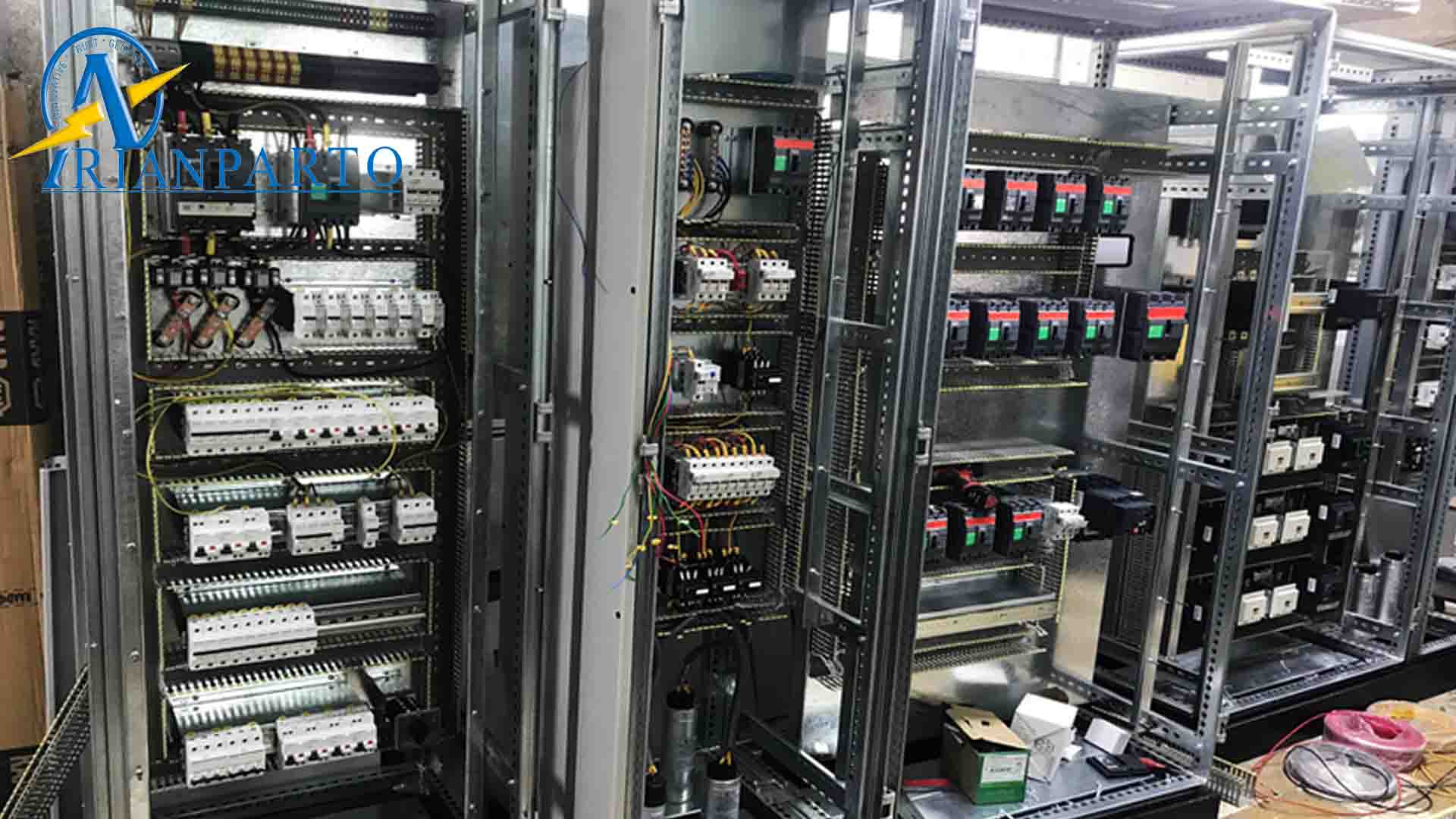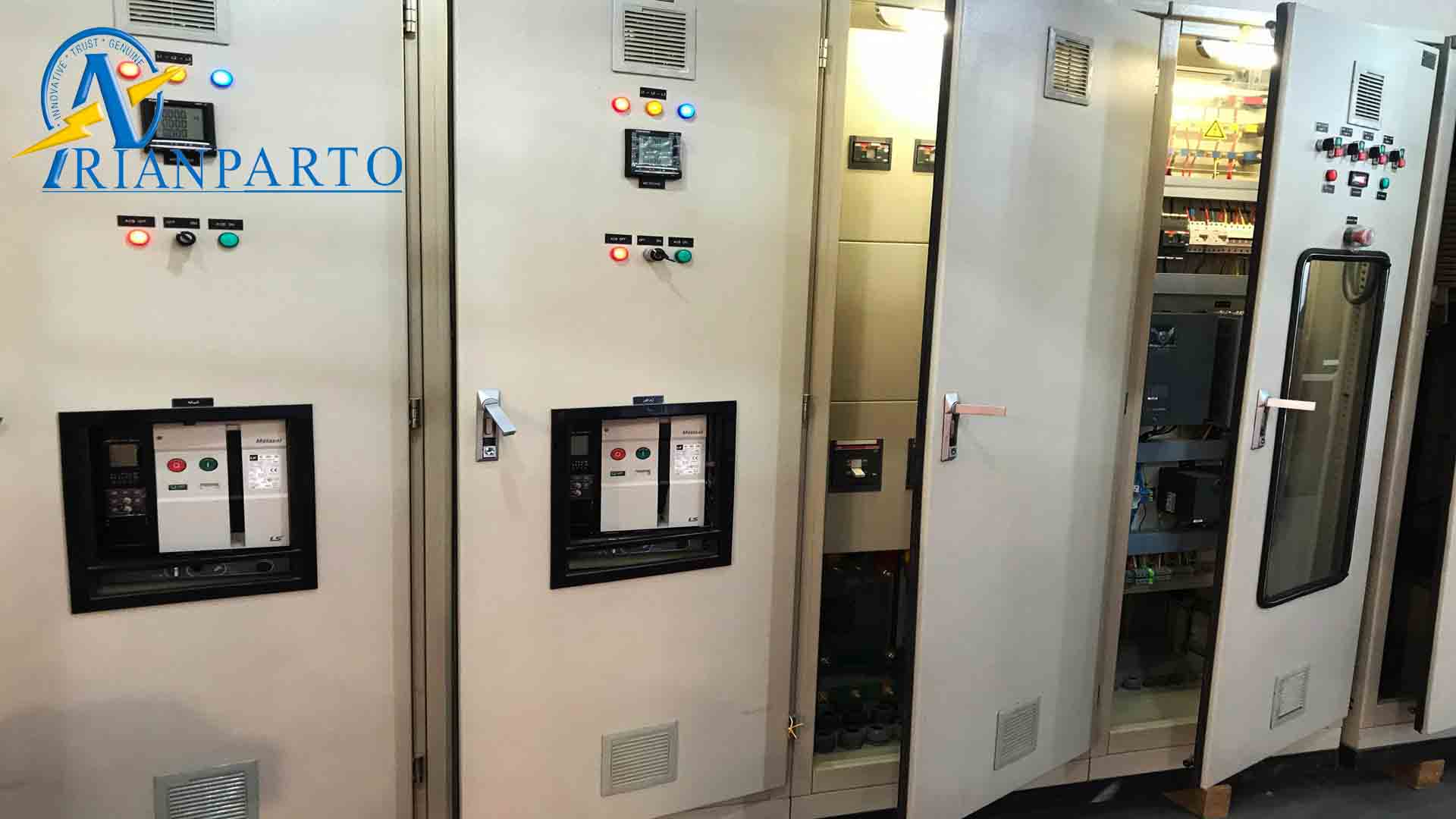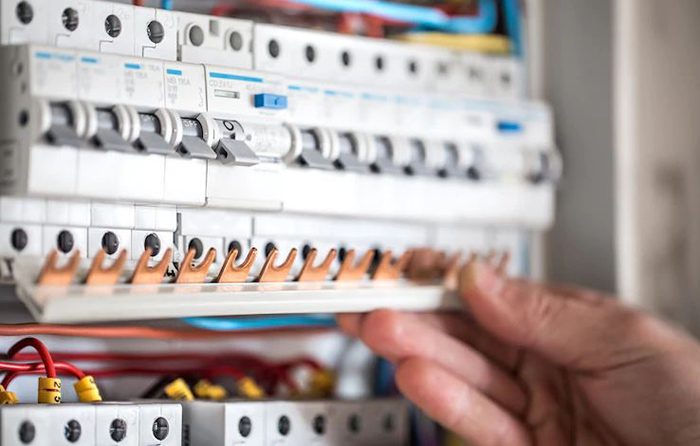Electrical panel construction is an essential aspect of managing and distributing electricity in various industries, buildings, and systems. This process ensures that power is delivered efficiently and safely. This article provides an in-depth look at the steps involved in constructing an electrical panel, the components required, and the key principles guiding the process.
How to Build Electrical Panels
Electrical panel construction involves several precise steps, each critical to its overall functionality and safety.
Preparation of Isometric Drawings (Cubicle) and Layout
The construction process begins with creating detailed isometric drawings and layouts.
- Isometric Drawings: These 3D diagrams are crucial for visualizing the final product and ensuring the proper placement of components like switches, relays, and circuit breakers.
- Layout Planning: Engineers design a layout that organizes components logically and optimizes space within the panel. Proper labeling ensures clarity during assembly and maintenance.
Welding, Cutting, and Drilling the Main Body
Fabrication of the panel body involves shaping and preparing metal sheets.
- Cutting and Drilling: Metal sheets are cut to specified dimensions using advanced tools like laser cutters, and holes are drilled for wiring and component installation.
- Welding: The sheets are welded to create a sturdy enclosure that can withstand physical stress and environmental conditions.

Painting the Body
Painting the panel body serves both functional and aesthetic purposes.
- Priming: A primer is applied to the surface to prevent rust and enhance the paint’s durability.
- Painting Process: Powder coating or spray painting is used to create a smooth, uniform finish.
- Curing: The painted body is heated or air-dried for long-term protection.
Assembly of the Electrical Panel Frame and Body
Once the body is ready, the frame and enclosure are assembled. This includes installing doors, hinges, and seals to protect against dust and moisture.
Wiring and Assembly of Electrical Components
- Component Installation: Circuit breakers, switches, and relays are mounted based on the layout.
- Wiring: High-quality electrical wires are used to connect components. Cable management systems like ducts and ties are used for organization.
- Safety Labels: All wires and components are labeled to ensure easy identification.
Testing and Quality Control
Comprehensive testing ensures the panel meets operational and safety standards.
- Continuity Testing: Verifies electrical connections.
- Insulation Testing: Confirms that insulation can handle the required voltage.
- Performance Testing: Simulates real-world conditions to check functionality.
Basic Principles of Electrical panel construction and design
A few key principles guide the design and construction of electrical panels:
- Load Calculation: The electrical load is analyzed to ensure the panel can handle it without overloading.
- Cooling Systems: Proper ventilation prevents overheating.
- Compliance: The panel must adhere to standards like IEC or NEC.
- Accessibility: Components should be easy to access for installation and maintenance.
Equipment and Components of an Electrical Panel
Electrical panels consist of several components, each serving a specific function.
Electrical Switches
Switches control the flow of electricity and allow isolation of specific circuits for maintenance or emergencies.
Fuse
Fuses protect circuits by breaking the connection when current levels exceed safe limits, preventing damage or fires.
Circuit Breakers
Circuit breakers perform the same function as fuses but are reusable. They automatically trip during overloads or short circuits and can be reset manually.
Relays
Relays act as switches controlled by electrical signals, commonly used in automation and high-power systems.

How to Order an Electrical Panel from Arin Parto
Ordering an electrical panel from Arin Parto is a straightforward process:
1.Consultation: Contact the Arin Parto team to discuss your project’s requirements.
2.Design Approval: Review and approve the proposed panel design.
3.Quotation: Receive a detailed quote based on the design and materials.
4.Manufacturing: The panel is built to your specifications using high-quality materials.
5.Delivery and Installation: The completed panel is delivered to your site and installed by professionals.
Raw Materials for Electrical Panel Construction
High-quality materials are essential for constructing a durable and efficient electrical panel.
Electrical Panel or Board
The enclosure is typically made of steel or aluminum, providing a protective housing for internal components.
Electrical Components
Relays, switches, circuit breakers, and fuses are used to control and protect the electrical system.
Bases and Screws
These are used to securely mount components within the panel.
Drills and Electrical Connections
Drilling tools and connectors ensure precise component placement and secure electrical connections.
Electrical Wires and Cables
Properly insulated wires and cables are essential for internal connections.
Applications of Capacitor Bank Panels in Industry
Capacitor bank panels play a pivotal role in modern industrial systems. They are designed to address power quality issues and enhance the efficiency of electrical systems, making them an indispensable component in a variety of industries. Below is an in-depth explanation of their applications and benefits.

-
Reducing Energy Costs by Compensating for Reactive Power
In electrical systems, reactive power is generated by inductive loads such as motors, transformers, and lighting systems. While reactive power does not perform any useful work, it consumes a portion of the total power supplied by the utility. This can lead to higher energy bills and penalties from utility companies for low power factors.
Capacitor bank panels are used to compensate for this reactive power by providing leading reactive power to the system, effectively neutralizing the lagging reactive power caused by inductive loads. By improving the power factor, industries can reduce their energy costs significantly and avoid penalties.
For example, in heavy industries like steel production and cement manufacturing, where large motors and machines are constantly in use, capacitor banks ensure that the power factor remains optimal, leading to substantial savings on energy bills.
-
Stabilizing Voltage Levels to Protect Equipment
Capacitor bank panels contribute to voltage stability by improving the quality of the electrical supply. Voltage drops are a common issue in industrial setups due to long transmission lines, high loads, or fluctuations in demand. These drops can negatively impact sensitive equipment, reducing their lifespan and efficiency.
Capacitor banks help stabilize the voltage levels by supplying reactive power locally, which minimizes the need for reactive power to be transmitted through the system. This reduces the load on transformers and transmission lines, ensuring that voltage levels remain stable even during peak loads.
For instance, in industries like petrochemicals and pharmaceuticals, where sensitive electronic equipment is used, maintaining stable voltage levels is critical to prevent malfunctions and production losses.
-
Improving the Overall Efficiency of Electrical Systems
Efficient use of electrical energy is a top priority for industries aiming to reduce operational costs and carbon footprints. In the context of Electrical Panel Construction, capacitor bank panels enhance the efficiency of electrical systems by reducing energy losses in transmission and distribution.
When reactive power is minimized, the total current flowing through the electrical system is reduced. This leads to lower energy losses in cables, transformers, and switchgear. Additionally, capacitor banks reduce the strain on generators and other power sources, allowing them to operate more efficiently and reliably.
In large-scale manufacturing units, such as automotive plants or food processing facilities, improving electrical system efficiency directly translates to higher productivity and lower maintenance costs.
-
Increasing Equipment Lifespan
The presence of reactive power and unstable voltage levels can cause overheating and excessive wear on electrical equipment such as motors, transformers, and switchgear. Over time, this can lead to frequent breakdowns and the need for costly repairs or replacements.
By addressing these issues, capacitor bank panels extend the lifespan of equipment. They ensure that motors and other inductive loads operate at their optimal efficiency, reducing wear and tear caused by electrical stresses.
For example, in HVAC systems used in commercial buildings and industrial plants, capacitor banks help maintain consistent performance and reduce the likelihood of equipment failure during peak demand periods.
-
Supporting Renewable Energy Systems
As industries transition toward renewable energy sources like wind and solar, capacitor bank panels play a crucial role in ensuring grid stability. Renewable energy systems often face challenges such as fluctuating power generation and low power factor. Capacitor banks help mitigate these issues by providing the necessary reactive power support, enabling smooth integration of renewable energy into the grid.
In wind farms, for instance, capacitor banks help compensate for the reactive power generated by wind turbines, ensuring that the power supplied to the grid meets the required quality standards.
-
Enabling Compliance with Regulatory Standards
Many countries have implemented strict regulations and standards for power quality and energy efficiency in industrial operations. Non-compliance can result in fines, penalties, or operational restrictions. Capacitor bank panels help industries meet these standards by improving power factor and maintaining voltage stability.
In industries with continuous processes, such as chemical or glass manufacturing, compliance with regulatory standards ensures uninterrupted operations and avoids financial losses due to penalties or downtime.
-
Reducing Environmental Impact
By improving power factor and reducing energy losses, capacitor bank panels contribute to lower energy consumption. This, in turn, helps industries reduce their overall carbon footprint and environmental impact. In today’s world, where sustainability is a key focus, capacitor banks align with the goals of energy conservation and eco-friendly operations.
For example, in data centers and IT facilities, which are major energy consumers, capacitor banks help optimize power usage, reducing the environmental impact of these operations.
-
Improving Operational Reliability
Reliability is a critical factor for industries, especially those that operate 24/7. Unplanned outages or equipment failures can result in significant financial losses. Capacitor bank panels enhance the reliability of electrical systems by reducing the risk of voltage drops, equipment failures, and power quality issues.
In industries like mining and oil & gas, where operations take place in remote locations with limited access to utility grids, capacitor banks ensure reliable power supply and reduce the dependence on costly backup systems.
-
Enhancing Performance in Specific Industrial Applications
Different industries benefit from capacitor bank panels in unique ways:
- Textile Industry: Helps maintain consistent power supply for high-speed machinery.
- Steel Industry: Supports the operation of heavy-duty furnaces and rolling mills.
- Automotive Industry: Ensures the efficient operation of robotic systems and automated assembly lines.
-
Cost-Effective Upgrades for Existing Systems
For industries operating with older electrical infrastructure, upgrading to modern systems can be expensive. Installing capacitor bank panels is a cost-effective way to enhance the performance of existing systems without the need for major investments in new equipment.
Safety Tips for Adjusting and Maintaining Capacitor Bank Panels
Safety is paramount when working with capacitor bank panels. Follow these tips:
- Always disconnect power before maintenance.
- Wear personal protective equipment (PPE), such as insulated gloves and safety goggles.
- Use insulated tools to avoid electrical shocks.
- Inspect the panel regularly for overheating or loose connections.
Arinparto Electrical Panels
Arin Parto offers high-quality, customizable electrical panels designed to meet various industrial and commercial needs. These panels are built with premium materials, comply with international standards, and undergo rigorous quality checks.
Frequently Asked Questions About Electrical Panel Construction
-
How Is an Electrical Panel Constructed?
Electrical panels are built by designing a layout, fabricating an enclosure, installing components, wiring them, and conducting tests to ensure safety and performance.
-
How Can You Place an Order for an Electrical Panel from Arin Parto?
Contact Arin Parto, discuss your requirements, review the design, and place your order. The panel will be manufactured and delivered to your site. Electrical panel construction is a meticulous process that requires expertise, high-quality materials, and strict adherence to safety standards. From understanding the principles of design to assembling components, each step plays a crucial role in ensuring the reliability and efficiency of the panel. By following this guide, manufacturers and users can ensure the best results for their electrical systems.





